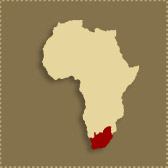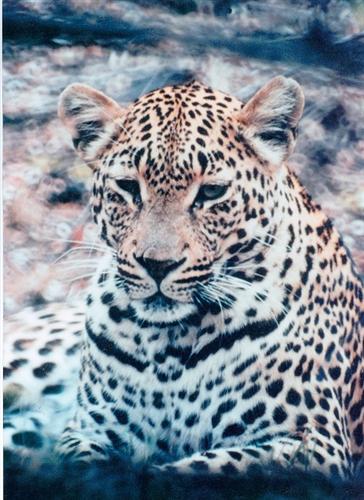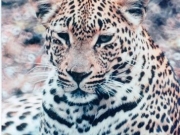Adventure Planner
South Africa
GREATEST VARIETY OF GAME IN AFRICA!
South Africa is a vast country offering virtually a full spectrum of wildlife habitat and hunting experiences. Along the Indian Ocean coast in both Natal and the Eastern Cape, one finds belts of extremely dense vegetation. Farther inland in both areas, the land rises quickly to substantial mountain ranges. North and west from the Cape Mountains lies the Karoo Desert, a wind-swept, arid plain with scattered hills and thornbush valleys. In the northwest, the Karoo yields to thornbush along the southern edges of the Kalahari.
In the center of the country lies Orange Free State, a high, well-watered plateau of rolling grassland that creates ideal habitat for antelope species.
To the north is the Transvaal, heavily developed near Johannesburg and Pretoria, but along the borders of Zimbabwe, Botswana, and Mozambique still very wild country. Here the northern Transvaal is essentially mopane woodland – the dense thornbush so many African species thrive in.
With a tremendous variety of habitat, South Africa is blessed with the greatest variety of big game species found on the African continent. She is the only country currently offering hunting for the entire Big Five, and also offers an impressive list of indigenous rarities not found elsewhere, including blesbok, bontebok, black wildebeest, Cape grysbok, Vaal rhebok, black and white springbok, Cape mountain zebra, Eastern Cape kudu, Cape or southern bushbuck, southern mountain reedbuck, and Natal red duiker.
Extensive game ranching has extended the range of many of South Africa’s most desirable species. For instance, nyala were originally confined to the coastal bush of Natal and Zululand, but today may be hunted in most areas of the country. Likewise, gemsbok, native to the arid Karoo and northern Cape, are also found in all regions. However, in general, South Africa’s game follows the habitat types. The thornbush of northern Transvaal holds species similar to what might be found in neighboring Zimbabwe – exceptional southern greater kudu and very good bushbuck, and common species such as impala and warthog. The semi desert of Karoo and northern Cape is typified by species such as springbok, gemsbok, and red Cape hartebeest. Herd animals like blesbok and black wildebeest are typical of the Orange Free State’s grassy plains. The Eastern Cape, with its great diversity of habitat, probably offers the greatest diversity of species, both naturally and because of intensive game ranching.
HUNTING CONDITIONS
A complete list of South Africa’s big game species is mind-boggling. However, it must be remembered this is a very large country, and not all species are found in all areas. The game list in any one area is likely to be extensive, from a dozen to more than 20 varieties. One area, therefore, offers plenty of game for any one safari. Thanks to South Africa’s excellent road network and internal air connections, it is also quite possible to target several of the local rarities and move from one area of the country to another during the course of a safari. However, this type of hunting can require a great deal of moving around and will not be nearly as leisurely a safari as staying in one or two areas should be. Such a hunt may also require arranging shorter hunts with several different outfitters, since these days few South African outfitters attempt to hunt the length and breadth of this big country. Most South African safaris are conducted from extremely comfortable permanent camps.
Sources of supply are superb, and both equipment and accommodations can be expected to be first rate. In recent years, licensing for professional hunters has become highly selective and requires exhaustive testing, so a high level of competence in both professional hunters and staff can be expected.
The vast majority of South African hunting is conducted on well-managed private lands. These may be extremely large tracts bordering Kruger National Park, or they may be very large contiguous estates in the Cape Mountains and other remote areas, but they are most likely to be high-fenced game ranches. South Africa’s game, as was America’s, was ravaged during her colonial era. Game ranching, sparked by the safari industry, brought the game back – but fencing is a part of life. It exists because fenced game is private property, breeding stock is extremely valuable, and fenced properties gain exclusion to the short hunting seasons conducted on unfenced properties.
On well-managed game ranches of reasonable acreage, the fencing should be invisible to hunters. On the plus side, game ranching has greatly increased both concentrations of game and numbers of species within a given area. Numerous South Africa species are open-country herd animals and not difficult to hunt under any circumstances. Other animals are difficult to hunt at all times in all places. In the aggregate, a hunter can easily average one species per day on a South African hunt, but not all the hunting is easy. Kudu, though plentiful, are always time consuming; likewise, bushbuck and nyala. Some of South Africa’s most difficult prizes may be surprising. Among her most difficult and most time consuming trophies to obtain are the smaller antelope such as Vaal rhebok, Cape grysbok, red and blue duiker, and suni.
BIRD HUNTING AND FISHING
Bird hunting can be seasonally excellent. Grouse and waterfowl hunting is some of the best in all of Africa. Incidental bird hunting is always a possibility on a safari. For a serious bird hunter we recommend an extra three to four days solely focused on bird hunting.



